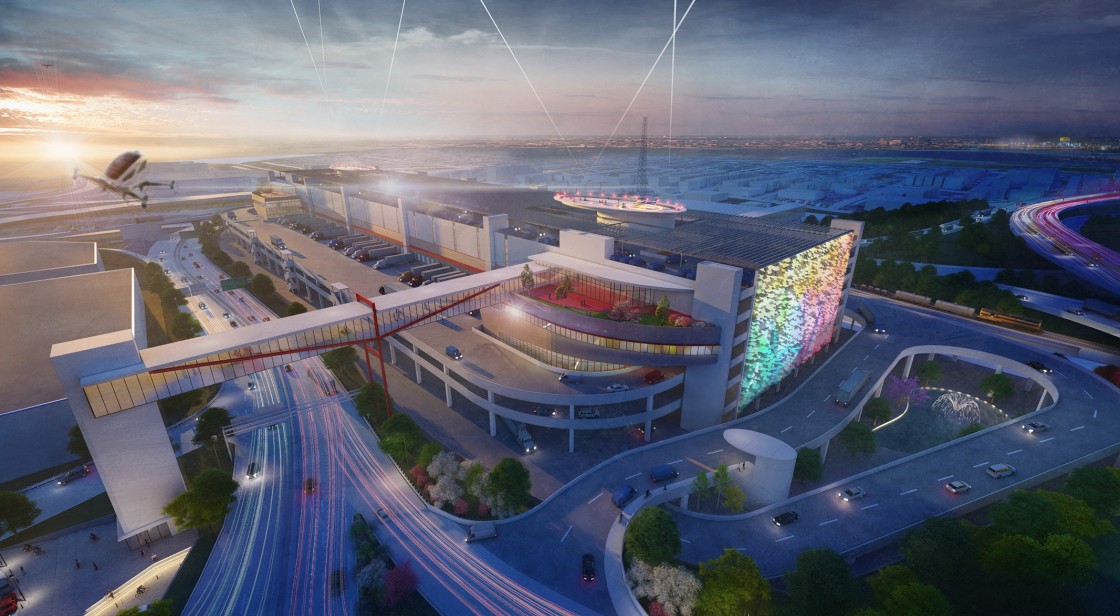All aspects of our society are accelerating rapidly, yet obstacles abound creating friction at every intersection – increased traffic and congestion battle shorter customer expectations, longer work schedules yet limited access to daylight and fresh air, demand for energy conversions, but not enough energy or failing energy grids. The need for creative design-driven development is becoming more essential than ever to overcome these friction points. We believe that industrial development has never been more important, and can serve as a catalyst for this change. One pathway for change is integrated development in which uses not historically paired, such as industrial, residential, and hospitality, are combined to provide more sustainable value than if developed independently. We see the need to re-envision industrial development as a critical component of infrastructure—a market of movement whose success will be measured on its ability to bring into balance the disparate friction points of society through the generation, supply, and connection of product, power, and people.
Product | Industry Moving
The distribution center of yesterday was centered on long-term static storage and medium-paced distribution in relatively remote areas, connected to pre-existing transportation corridors. It is no secret that the rise of Amazon and the resulting push to decrease delivery times has created a market dynamic that has only intensified during the past year. This will not change. In fact, we only see the potential for even faster delivery times and increasing consumer demand to require more storage capacity per square foot, pushing buildings higher even in non-constrained landscapes. Creative multi-story solutions surrounding dense population centers and within constrained road networks are critical. The masterful internal development connections and roads must provide safe and secure access to all levels and all tenants, with redundancy and safeguards to ensure high speed throughput. The use of automation and cubic densification systems such as ASRS or micro fulfillment systems may forge new business opportunities and pathways for developer differentiation. Locating in areas with multiple paths of distribution from truck to van to car, or even bike delivery, may create a service-based edge. As sites and regulations allow, we can even begin providing the foundation for drone or water deliveries.
Power | Industry Energizing
The challenge to restrict global temperature rise to less than 1.5 degrees Celsius by 2050 has never been so pressing and may be slipping away. The latest UN report on global warming paints an increasingly research-based and fact-supported dire picture; but there is hope. Companies such as Amazon and Fedex are diligently working toward carbon neutrality with their fleets by 2040. Several states including California and New York are mandating solar installations or green roofs as part of commercial facilities. Further, the growth of electric vehicle charging infrastructure has become critical to keep pace with the fleet goals of these business and the demand for projections in electric vehicle purchases by consumers. In order to meet this demand, buildings will need to start becoming miniature sustainable power plants. Whether using the power directly for tenants, or feeding back into the grid, more creativity and supply is needed. We believe that at minimum, all new developments and buildings should be developed to accommodate photo voltaic arrays whether regulated by state or local codes, as energy generation. This is critical to safeguard the investment and contribute to the solution of controlling temperature rise. We can see a future where the delivery model shifts to night-time deliveries that allows energy harvesting and the resulting charging of fleets to happen during the day when the sun is shining and fleets distributing goods to homes and secure lockers at night. In addition to the innate power balancing this would allow, it would also serve to further support the accelerated delivery and movement of product described previously, by allowing delivery at night, thus working towards the alleviation of traffic congestion on already strained highways.
People | Industry Transforming
Industry is pushing closer to more densely populated areas to achieve proximity to both consumers and workforce. This convergence of labor and consumer populations is driving industrial development that is more conducive to the human condition. For example, more transit-oriented industrial development can make workplaces more accessible for employees, reduce time spent commuting, and improve mental health. In addition, having multiple points of connection to greener transportation networks, light rails, bike paths, and even urban air mobility hubs, will allow multi-modal transportation and distribution hubs that allow 24/7 economic generation. Industrial development also needs to pay more attention to the quality of workplace, such as connecting workforce to the landscape, providing equitable access to daylight and fresh air, bringing nature and new opportunities for respite in the workday. As industry transforms, growth in automation and sustainable technology management will require industrial labor to be more skilled and offer job opportunities of increasing importance and value, growing purpose in the workplace.
Change has become inevitable and we have the opportunity to be part of it, to drive a new way of development for industry. Through forward thinking, seeing design opportunities growing from existing systems and sites, and a little bit of creativity, we strongly believe that we can all be witnesses and active participants in a new Industrial model that is founded on distribution acceleration, power generation, transportation optimization, while becoming workplaces of personal and societal impact.

